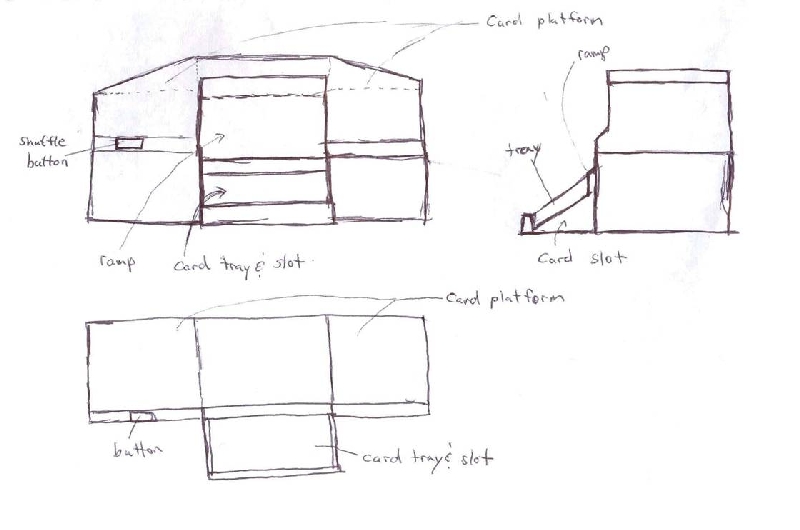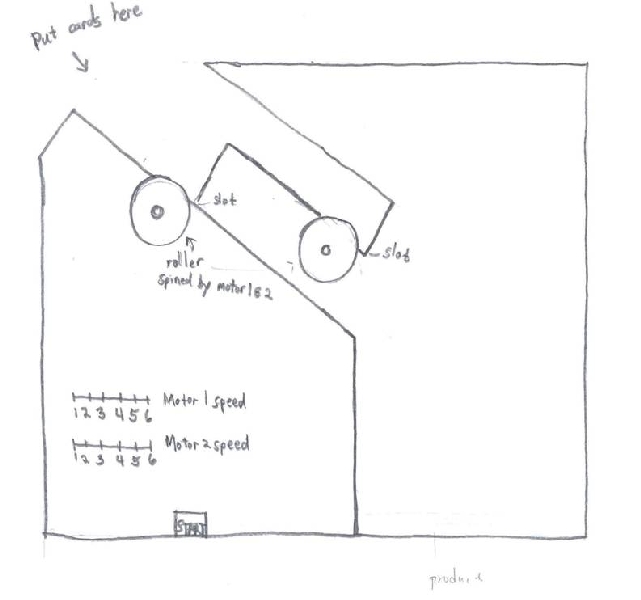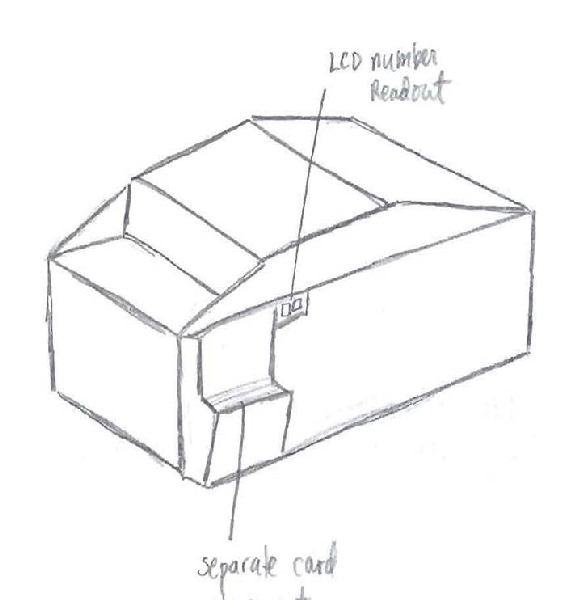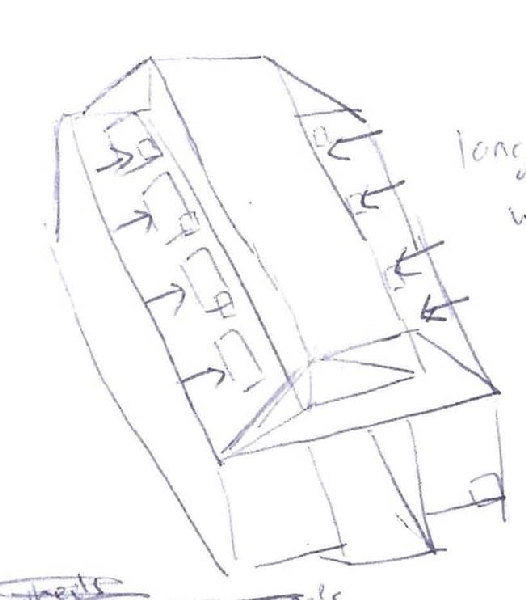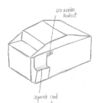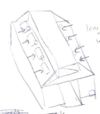Card Shuffler Improvement Ideas
From DDL Wiki
Return to the main Automatic card shuffler page.
Contents |
Improvement Ideas
We narrowed the field of our ideas and concepts down to 4 top choices keeping these aspects in mind:
- Randomness of the shuffling
- Noise reduction
- Simplification of the overall process
Concept 1 - Ramp Output Tray
A large issue we encountered was the difficulty in removing the cards from the output tray after they have been shuffled. This design includes a ramp that extends outside the shuffler a little so that the cards will fall down and out and will be easier to remove.
The operating button will be relocated so that it is not infront of the output slot anymore.
We feel this ramp will not only make the cards easier to remove, but it will present the cards in a more aesthetic fashion.
Concept 2 - Self Cutting Shuffler
This design will have one slot for the user to load the entire deck into, which will be angled so that the deck proceeds to slide down after it is placed. The design of the shuffler will then cut the deck in half automatically, with the bottom half going into the lower cache to be shuffled by the wheel and the top half going into the upper cache to be shuffled in.
This concept eliminates the needs for the user to cut the deck evenly everytime the shuffler is used. We feel this design simplifies the overall process and that it would provide a good solution to speeding the use of the shuffler up.
Concept 3 - Digital Readout
This concept would have a digitial readout either a lcd screen or led light of some sort to be able to show data. A programmable processor could then be implemented to contain thigns such as rules or how to play different games. This digital readout can also serve as a score keeper for games.
Another function that we felt useful was the addition of the shuffler being able to count the cards. With this digital readout, the user would be able to know how many cards are in the deck simply by running the shuffler.
Although this design would introduce a host of benefits and abilities to the shuffler, it would increase the cost significantly.
Concept 4 - Elongated Card Loading Slot
This concept hopes to solve the problem of the randomness of the shuffle. We found that the current model shuffles very consistently everytime, which leads to a predictable outcome. Card counters would be able to know how the cards would be shuffled which defeats the purpose of shuffling.
This design would feature an elongated body. The card loading slots would be angled as well as longer so that when the user places the two halves of the deck on each side, the cards will slide down automatically to be pulled in by the additional wheels on each side. This would randomize the shuffle pattern more as cards would be pulled in from multiple locations, and then slid down the output tray to gather into one pile. This would also speed up the shuffling process as well since multiple wheels are pulling the cards into the middle.
One caveat in this design is that the body would enlarged, so costs would be slightly higher due to more materials needed. The product would also take up more space, and would have a larger footprint on a game table that it is used on.
Pugh Chart
According to the pugh chart, concept 3 would be the most favorable product for the market. It would make sense for concept 1 to come second to concept 3 because of the fact that the only edition considered was the ramp. Concept 1 serves as a safe reference in case the other three concepts deem unfeasible. Concept 2 comes in third because of its size. Although it would appeal to people who have dexterity issues, casinos would eat up most of the percentage of card shuffler users. Furthermore, the people who have dexterity issues are rarely seen in places like casinos. As a result, the size and weight of Concept 2 proved to be detrimental to its overall net score. Concept 4 Received the lowest score because of its weight, size, and durability. There are simply so many wheels to the system that 1) it is not guaranteed that each wheel will grab a card as it slides down the side ramps and 2) since the wheels are easily exposed, the risk of the wheels becoming damaged are high. In addition, its size and weird shape would make it difficult to store. What separates Concept 3 from the others are 1) the fact that it has the ramp for easier access to the cards like the others and 2) It allows the user to do almost everything just by inputing data on the LCD readout then simply allowing the shuffler to do its thing. What would make this concept difficult to achieve would be required circuitry, which would contribute to its additional weight, the cost of the product, and the durability as a result of the high required power input (meaning bigger sized batteries). However, it is concluded that the willingness for a user to buy a shuffler that could pretty much do it all within the realm of a card game outweighs the cost of the product.
Return to the main Automatic card shuffler page.
